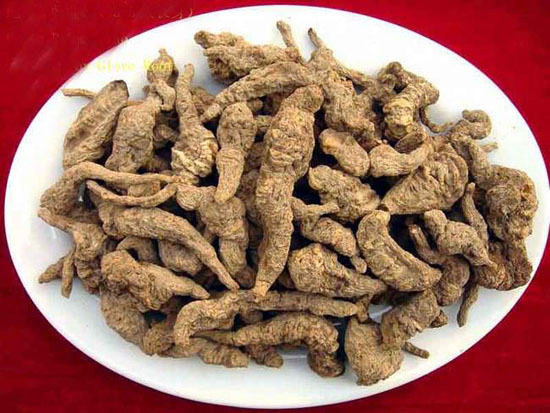Medicinally it mainly refers to the fresh or dried root of Rehmannia glutinosa Libosch., which is one of medicinal plants in the family Scrophulariaceae. Other common names of it include Chinese foxglove, radix rehmanniae, radix rehmanniae glutinosae, and the like. In China it is primarily produced in provinces of Henan, Hebei, Inner Mongolia and the Northeast. And it is also cultivated in most parts of China. It is generally harvested in autumn. The following steps are to remove the residual part of stem, fibrous root, and soil. It is normally used fresh or dried.
The meaning of "Sheng" has a little subtle difference between ancient and modern backgrounds. In ancient time Sheng Di means the fresh herb since back then the prepared rehmannia didn't invented yet, especially before the Tang and Song dynasties. Now the "Sheng", meaning dried, is more an opposite concept of "Shu" (prepared). Hence, today when it is used in the fresh form, the prescription should give a clear indication of "Xian" (fresh).

Xian Di Huang (fresh form) is in the shape of spindle or strip, 8 to 24cm long, and in diameter of 24cm. Outer skin is thin, reddish yellow, and with curved longitudinal wrinkles, bud scars, long horizontal lenticels and irregular scars. It is succulent, easily broken, and with yellowish white cortex, visible orange oil spots, yellow-white xylem, and radially arranged xylem vessels in cross section. It is with slight odor and slightly sweet and bitter taste; Sheng Di Huang (dried raw form) is mostly in the shape of irregular lumps or oblong and with swollen middle and slightly small ends. Some are small, elongated, slightly flat and twisted, 6 to 12cm long, and 3 to 6cm in diameter. Surface is dark brown or brownish gray, very wrinkled, and with irregular horizontal curved lines. It is heavy, soft and tough, difficult to break, and with brown or black section that is shiny and sticky. And it is odorless and slightly sweet.
Rehmannia glutinosa benefits
Its main health benefits are mainly focused on two aspects – removing heat to cool blood and nourishing Yin and generating body fluid. Since it is of sweet-bitter taste and cold nature, it acts on blood aspect and can cool blood by clearing blood-aspect heat. As a result, it is ideal for warm disease and heat illness that is characterized as high fever, thirst, and deep red tongue. Besides, it can be used in treating a variety of hemorrhage too since it is able to stop heat-induced bleeding.
It can nourish Yin too thanks to its moist and juicy properties. And because of its sweet taste and cold nature it can also nourish Yin, moisten dryness, and promote the secretion of saliva or body fluid. Hence, it is the perfect remedy for those with body fluid impairment due to heat pathogen in late warm and heat disease. Also, its effect of nourishing yin and clearing heat is frequently used in the treatment of dry mouth, thirst, and dizziness due to fire excess from yin deficiency and xiaoke disease that belongs to the pattern of impairment of fluid by excessive heat.

![Diseases, Symptoms, tcm, [tcmwindow.com]](/uploadFile/adImg/2015/11/11/f5cbfcc0-4df5-4646-9b9a-f316651a0199.jpg)





